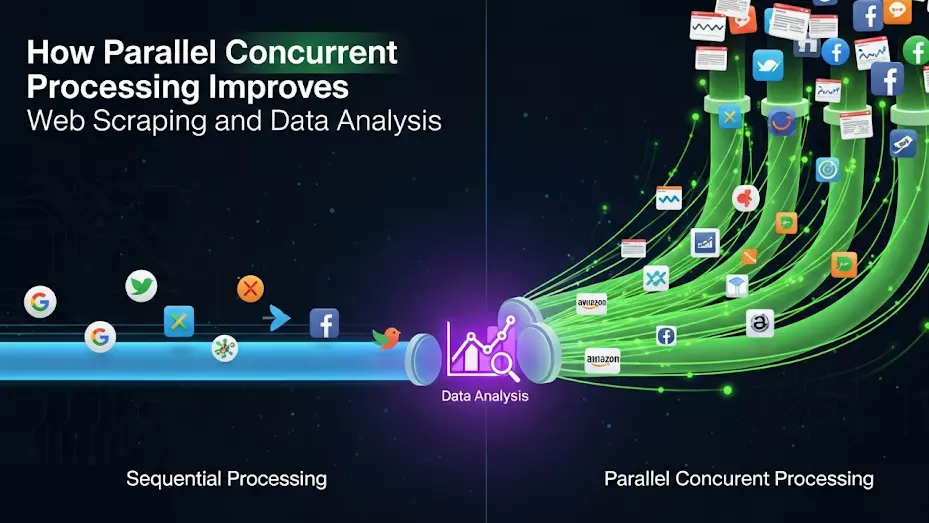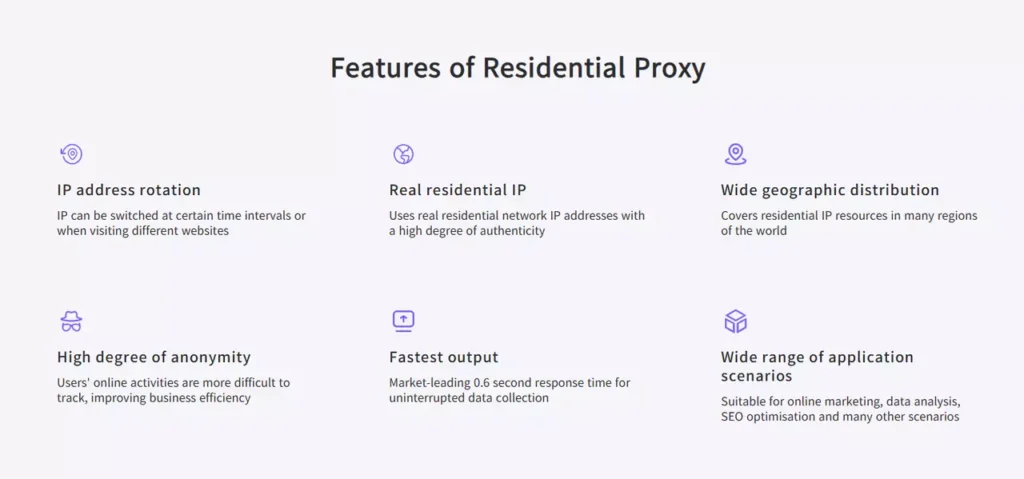In today’s data-driven world, businesses rely on fast and accurate insights to stay competitive. The challenge, however, is that collecting and analyzing data at scale can be slow and resource-intensive when done sequentially. This is where parallel concurrent processing plays a transformative role. By executing multiple tasks simultaneously it enhances both web scraping and data analysis, enabling faster results, higher efficiency, and better scalability.

What Is Parallel Concurrent Processing?
At its core, parallel concurrent processing refers to performing multiple operations at the same time instead of handling them one by one. While traditional sequential systems execute tasks step by step, parallel systems break down complex workloads into smaller chunks that can run independently.
This approach is especially powerful for data-heavy industries. For instance, in web scraping, thousands of requests can be sent simultaneously, while in analytics, multiple datasets can be processed together without delay.
Why Parallel Concurrent Processing Matters in Web Scraping
Web scraping often involves gathering information from countless websites, pages, or APIs. Doing this sequentially would be extremely slow and inefficient. Parallel concurrent processing ensures that multiple requests run at the same time, drastically reducing scraping time.
Key Benefits for Web Scraping:
- Speed – Large volumes of data can be retrieved quickly.
- Efficiency – Resources are used optimally, minimizing downtime.
- Scalability – More scraping tasks can be added without overwhelming the system.
For example, an e-commerce company monitoring competitor pricing may need millions of requests daily. Without parallelism, this task could take days. With it, results are delivered in near real time.
Data Analysis Enhanced by Parallel Processing
The value of data lies in how quickly and accurately it can be analyzed. Big datasets often include structured and unstructured formats that require heavy computation. Parallel concurrent processing allows analysts to:
- Run multiple queries simultaneously.
- Process large datasets faster.
- Apply machine learning models in shorter cycles.
By splitting the workload across multiple processors or threads, organizations achieve higher performance without sacrificing accuracy.
Real-World Applications
The combination of parallel concurrent processing with modern tools makes it essential in industries such as:
- Market Research – Collecting and analyzing consumer behavior data.
- SEO Optimization – Running simultaneous checks on rankings across regions.
- E-Commerce – Monitoring stock levels and prices globally.
- Social Media – Aggregating content from multiple platforms in real time.
These examples highlight how concurrent systems enable businesses to adapt faster and make data-driven decisions.
How IPFLY Supports Parallel Processing in Data Tasks

At IPFLY, we understand that speed and reliability are critical when handling massive data operations. Our global proxy network, spanning over 190+ countries, is designed to support tasks where parallel concurrent processing is most beneficial.
When organizations need to run thousands of scraping requests simultaneously, rotating residential proxies and dedicated datacenter proxies make it possible to avoid blocks, maintain stability, and ensure higher success rates. With more than 90 million IPs available, the infrastructure we provide helps businesses leverage parallel systems effectively.
In data analysis, consistent and secure access to diverse IP pools ensures accurate, location-based insights. By combining parallel concurrent processing with a reliable proxy network, organizations achieve both speed and precision in decision-making.
Overcoming Challenges in Parallel Concurrent Processing
While powerful, concurrent systems also introduce complexity. Some common challenges include:
- Load Balancing – Ensuring resources are evenly distributed.
- Error Handling – Managing failures when multiple tasks run at once.
- Network Stability – Preventing IP bans during web scraping at scale.
This is why combining robust processing systems with proxy solutions is essential. By distributing requests across many IPs, businesses reduce the risk of interruptions and keep workflows efficient.
The Future of Parallelism in Data Workflows
As data volumes continue to grow, parallel concurrent processing will become even more critical. With the rise of AI-driven analytics, real-time scraping, and global data collection, concurrent systems will no longer be optional—they’ll be the foundation of scalable operations.
For organizations looking to stay ahead, integrating proxy solutions like those offered by IPFLY into parallel workflows ensures the ability to handle increasing demands without slowing down.
Conclusion

Parallel concurrent processing is revolutionizing how businesses scrape, process, and analyze data. By enabling simultaneous task execution, it shortens timelines, improves efficiency, and delivers insights faster than ever before. When paired with a strong proxy infrastructure, it unlocks new possibilities for global data operations.
At IPFLY, we continue to provide the proxy foundation needed for these advancements, supporting industries that rely on speed, accuracy, and resilience in their data workflows.
👉 Join our Telegram community to stay updated on the latest strategies for data collection, analysis, and proxy solutions.


